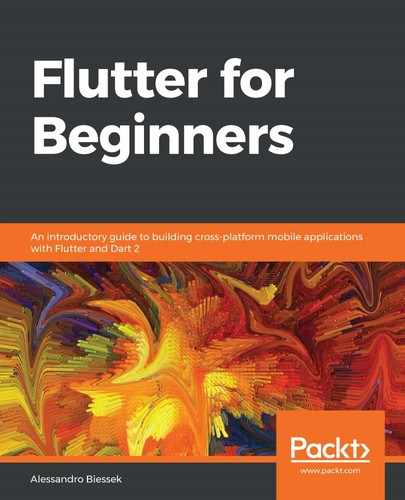If you take a look at both constructors of statelessWidget and statefulWidget classes, you will notice a parameter named key. This is an important property for widgets in Flutter. It helps in the rendering from the widgets tree to the element tree. Besides the type and a reference to the corresponding widget, this element also holds the key that identifies the widget in the tree. The key property helps to preserve the state of a widget between rebuilds. The most common usage of key is when we are dealing with collections of widgets that have the same type; so, without keys, the element tree would not know which state corresponds to which widget, as they would all have the same type. For example, whenever a widget changes its position or level in the widgets tree, matching is done in the elements tree to see what needs to be updated in the screen to reflect the new widget structure. When a widget has a state, it needs the corresponding state to be moved around with it. In brief, that is what a key helps the framework to do. By holding the key value, the element in question will know the corresponding widget state that needs to be with it.
- Title Page
- Copyright and Credits
- Dedication
- About Packt
- Contributors
- Preface
- Section 1: Introduction to Dart
- An Introduction to Dart
- Intermediate Dart Programming
- Dart classes and constructors
- Interfaces, abstract classes, and mixins
- Understanding Dart libraries and packages
- Introducing async programming with Futures and Isolates
- Introducing unit testing with Dart
- Summary
- An Introduction to Flutter
- Section 2: The Flutter User Interface - Everything is a Widget
- Widgets: Building Layouts in Flutter
- Handling User Input and Gestures
- Theming and Styling
- Routing: Navigating between Screens
- Section 3: Developing Fully Featured Apps
- Firebase Plugins
- Developing Your Own Flutter Plugin
- Accessing Device Features from the Flutter App
- Platform Views and Map Integration
- Section 4: Advanced Flutter - Resources to Complex Apps
- Testing, Debugging, and Deployment
- Improving User Experience
- Widget Graphic Manipulations
- Animations
- Other Books You May Enjoy
Widget key property
We will be using keys in our app further on this book. If you need to find more details on how key affects the widget and the available types of keys now, please check out the official docs' introduction to keys: https://flutter.io/docs/development/ui/widgets-intro#keys.
-
No Comment
..................Content has been hidden....................
You can't read the all page of ebook, please click here login for view all page.
